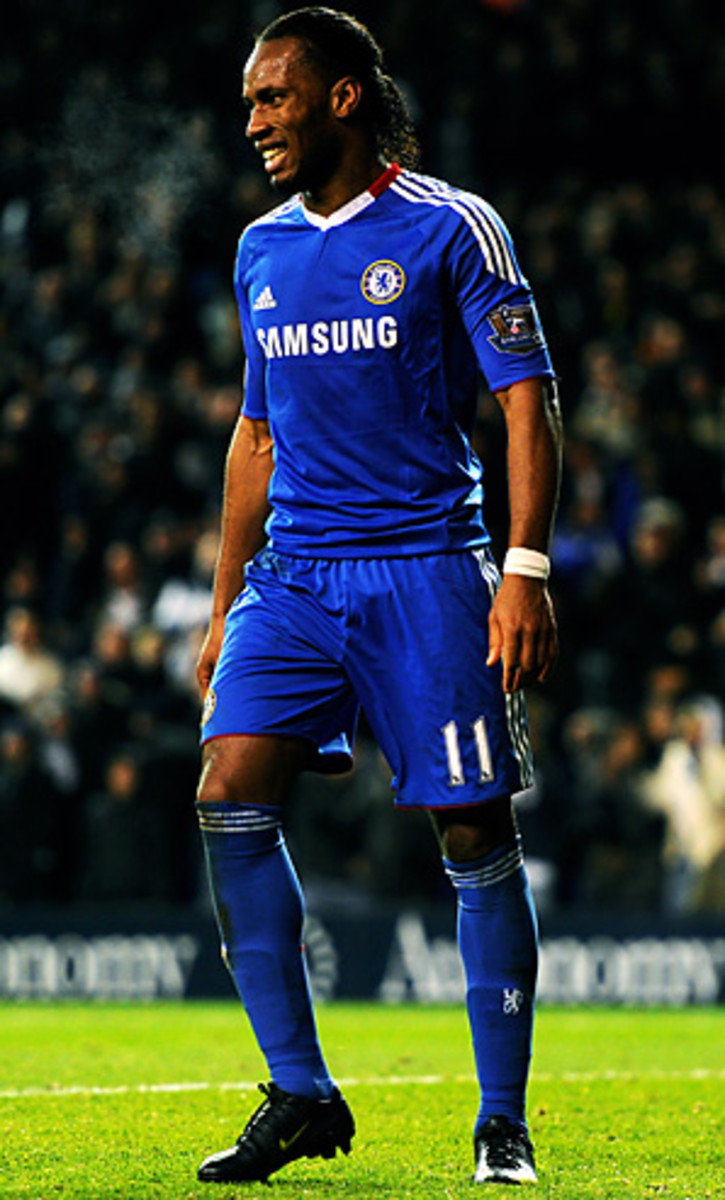Premier League success has strong correlation to one's transfer spend
"The league table never lies" is a famous saying. But of course, that doesn't mean it always tells the truth, the whole truth, and nothing but the truth.
In the Premier League, clubs operate on very different budgets. And the more time that passes, the more predictable the league becomes. Although this season is providing unusually unpredictable, richer teams continue to gravitate to the top, and poorer ones sink to the bottom.
Until now, as noted in Simon Kuper's Soccernomics, there was believed to be no evidence of a relationship between transfer spending and success; wage bills were seen to be the only key factor. Pay As You Play -- the book I cowrote with Graeme Riley and Gary Fulcher -- suggests otherwise.
Our project began with a desire to convert all old transfer fees into current money, so that spending from one decade could be compared in the same terms as that of another. We researched every single transfer fee for every season between 1992 and 2010. An average transfer price was calculated for each season.
In 1992/92 that average was £594,309 ($942,336); by 2008/09, the figure had risen to £5.1 million ($8.1 million), although with the global recession hitting, it fell to a fraction under £4 million ($6.2 million) by 2009/10. Therefore someone like Paul Stewart, who cost Liverpool £2.3 million ($3.6 million) when purchasing from Spurs in the inaugural season of the re-branded league, effectively set the club back £15.3 million ($24 million) in today's money.
This led to a look at every top-flight team since 1992, and how much they cost to assemble in 2010 terms. The expenditure on the entire squad goes some way to predicting where it will finish, but the key factor was how much of a club's paid-for talent actually made it into the team (for whatever reason) over the course of a season. Big squads help a manager cope with injuries, but more often than not, the most expensive players tend to be the match-winners.
With the cost of every single player in our database, as well as the starting lineup of every game, we were able to devise a cost-per-point meter to review each season, to see which clubs were performing better or worse than the norm. (The cost per point is the average cost of the starting lineup when inflation is applied -- termed the "£XI" -- divided by the number of points won.)
On average, it costs considerably more to finish with 80-95 points (£1,362,305 million/$2.1 million) than it does to finish with 60-69 points (£989,917/$1.5 million), with 70-79 points (£1,114,604 million/$1.7 million) tucked neatly in between. In the '90s there was a more random feel, with relative paupers at the top end of the table.
In the '90s, while it cost more on average to finish with 80-89 points (£902,743/$1.4 million) than 60-69 (£878,718/$1.4 million), the difference was fairly marginal (3 percent). But this past decade, the difference is immense (40 percent). Gone are the days when a small team such as Norwich could finish in the top three with 72 points on a shoestring budget. It's been a decade and a half since a promoted team even finished in the top four.
In terms of the finances that underpin success, it's interesting to note that Arsenal's first two titles under Arsène Wenger were with a deceptively expensive £XI (the second most expensive in the league in 1997/98 and the costliest in 2001/02). Since the Frenchman began working on a more limited budget the trophies have dried up, and even a top-two finish has eluded the Gunners (although the team is currently in second as of this week).
Chelsea account for the most expensive squad and have fielded the costliest XI (£255.3 million/$402 million) in the past 18 years, and generally prospered as a result; Manchester United have been a mix of big spending and home-rearing, while Liverpool began the new era with the most expensive squad in the country, only to fall from grace under Graeme Souness.
But of course, dear old Newcastle provide the entertainment; so much so that a whole chapter of the book is dedicated to them. Until the team's relegation in 2009, they were an ever-changing but always expensive collection of players that no manager could fashion into a top side, beyond brief flourishes here and there. The cost per point was always horribly high.
Having finally found a manager in Chris Hughton who could perform better than the norm -- winning points at a far better rate than at any time since the club's first season in the Premier league 17 years ago (on account of the relatively inexpensive lineup this season) -- Newcastle owner Mike Ashley then proceeded to sack him.
His replacement, Alan Pardew, has a surprisingly good record. But he has to prove he can overcome one of the themes that pervades the "Pay as you play" theory: that punching above your weight with a smaller club seems to mean little when you move to a much bigger one. Newcastle may only be a promoted club this season -- which, in that sense, ranks them with Blackpool and West Brom -- but they are still a big name, with a packed stadium full of demanding supporters. For all the love of entertaining football on Tyneside, Pardew will need to deliver results commensurate with the expectations and spending levels of the club's boardroom.






